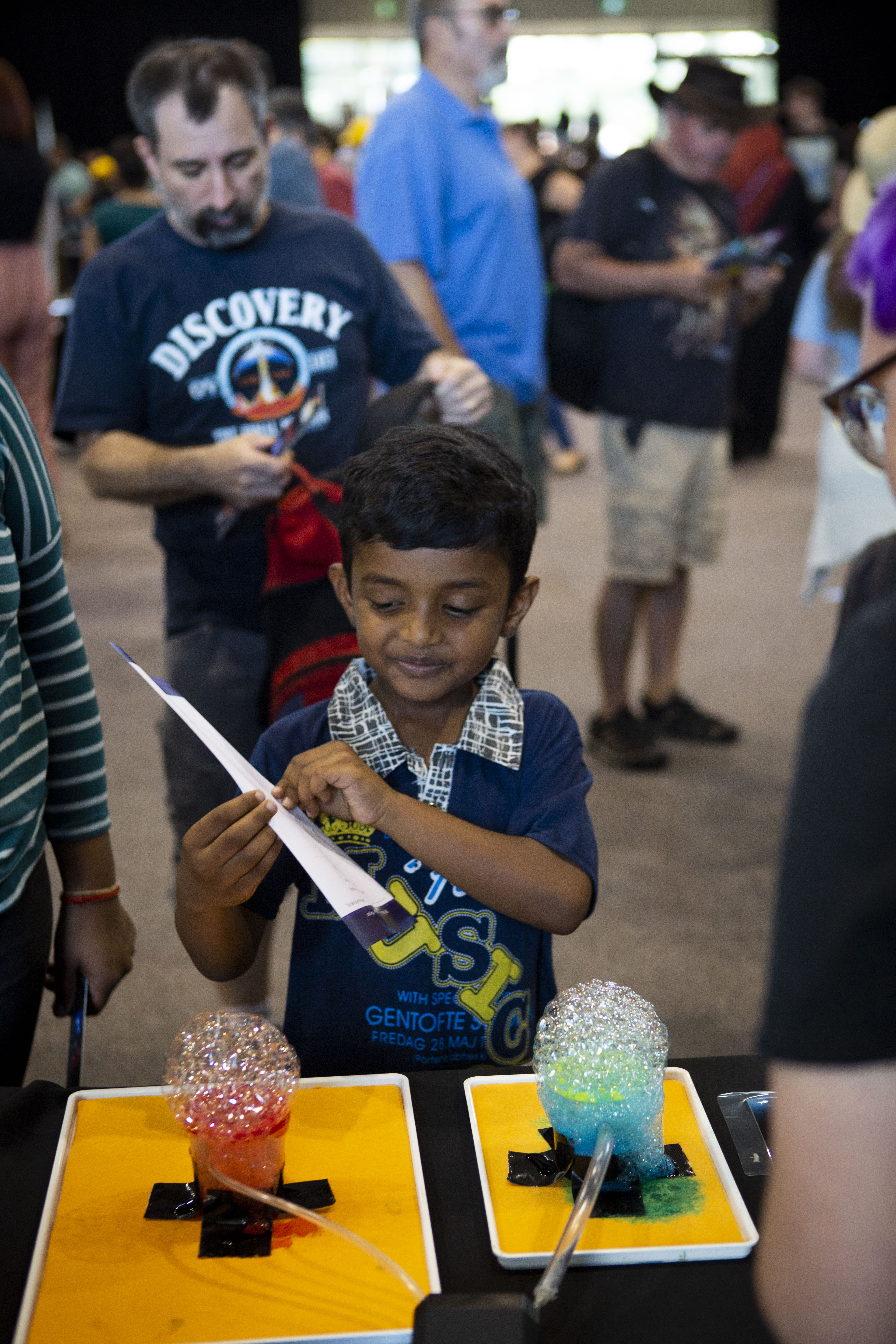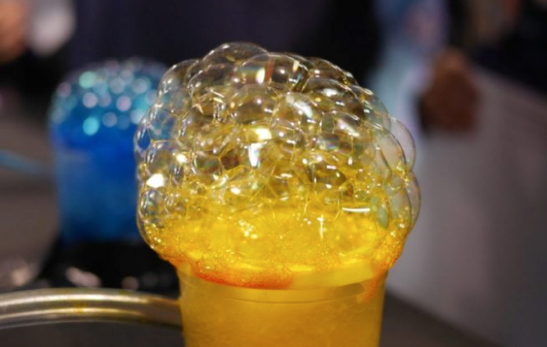Blow some bubbles and capture them on paper to learn some interesting facts about the epoch of reionisation, 380,000 years after the Big Bang.

 The Epoch of Bubbles is a fun activity for all school-aged students. The wide range of suitability is due to the science’s complexity that students can explore at different age levels.
The Epoch of Bubbles is a fun activity for all school-aged students. The wide range of suitability is due to the science’s complexity that students can explore at different age levels.
For lower primary students, the activity is a fun way of linking science and art. For upper primary students, the activity can be extended to measurement and looking at the use of models in science.
For secondary students, the activity is related to a deeper understanding of Science Understanding concepts and can be extended to statistical analysis of data.
THE SCIENCE
About 380,000 years after Big Bang, the Universe had cooled and expanded enough that there were vast quantities of hydrogen (and a bit of helium) everywhere and not much else. This neutral hydrogen (a proton and an electron) created an opaque “fog” that light could not penetrate, called the Cosmic Dark Ages, and most of the Universe is unobservable. Any electromagnetic radiation that might have been have been emitted was quickly absorbed by the hydrogen gas.
As the hydrogen atoms slowly collapsed into more dense regions due to gravity, forming the first stars, the light emitted from them tore the electrons off the hydrogen atoms, creating transparent regions around them, like bubbles. Eventually, there were so many stars in the Universe that most of the hydrogen in space was changed or reionised and the bubbles joined up, a process that took about one billion years.
We don’t know much about the processes that occurred during this time and our scientists are working with cutting edge radio telescopes to try and detect the neutral hydrogen from the epoch of reionisation, so better understand this cosmic time period.
ACTIVITY
This activity is aiming to replicate the bubble-like structures that formed during the epoch of reionisation. The bubble solution represents the neutral hydrogen, and the air inside the bubbles is transparent ionised hydrogen.
The bubbles generated are representative or provide a model of the reionising Universe in three dimensions.
Get the students to imagine a tiny star inside each bubble; the longer it shines, the larger the bubble gets.
By placing the activity sheet on the bubbles, we are essentially viewing a two-dimensional “slice” along a plane in the “Universe”. The longer the paper is held down, the longer the chunk of time of the Universe you are ‘observing’ and the harder any one bubble is to distinguish.
Activity instructions
- Download and print the required number of copies of the ‘Epoch of Bubbles’ activity sheet.
- Make up the bubble solution with food dye in small cups or containers.
- Using straws, students blow bubbles into the bubble solution.
- Students lay the grid side of the activity sheet over the bubbles.
For more detailed instructions, including an equipment list and safety notes, download the activity instructions below and watch the video, which is especially helpful if you are doing the activity with younger children.